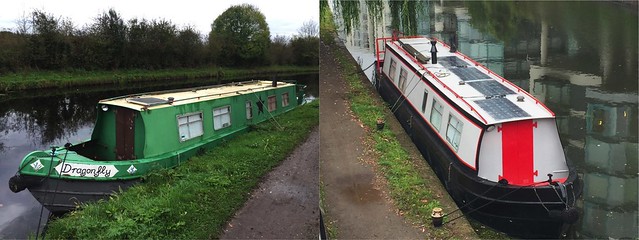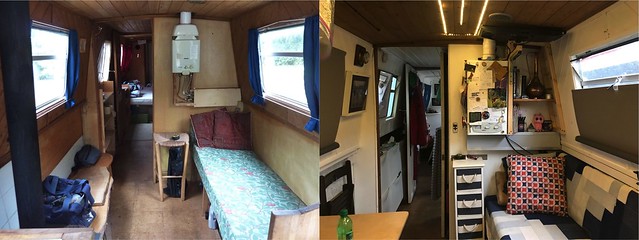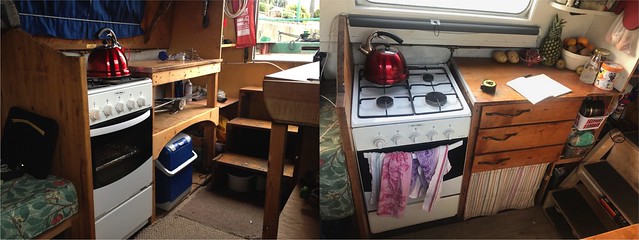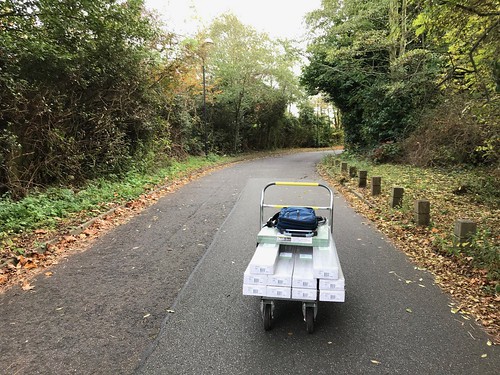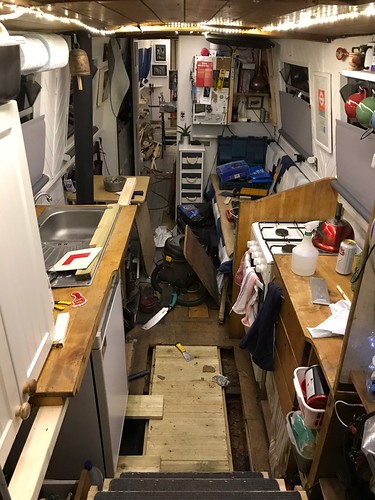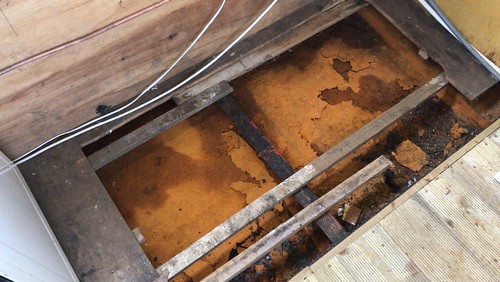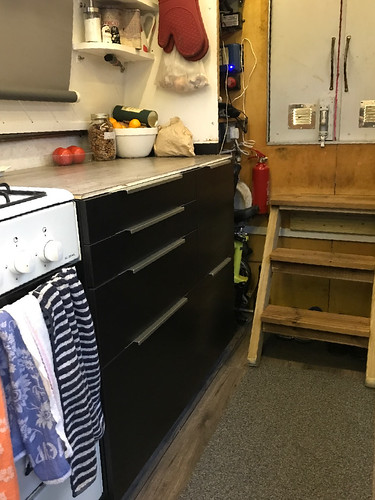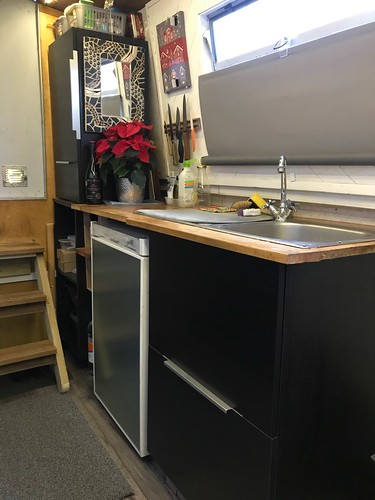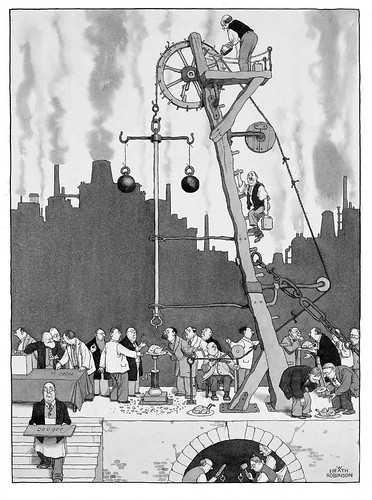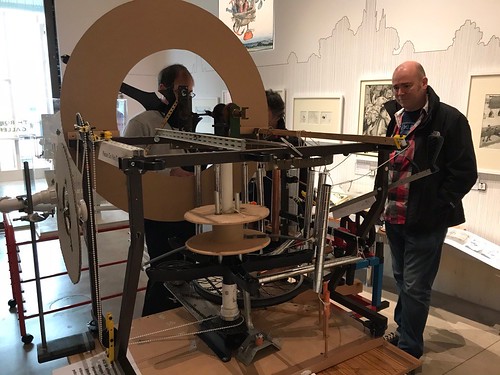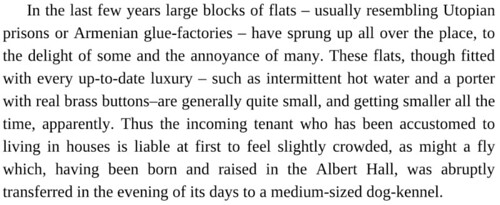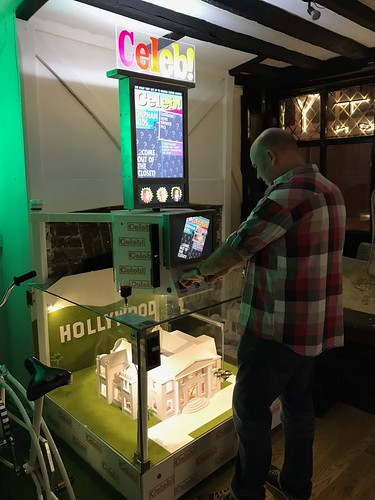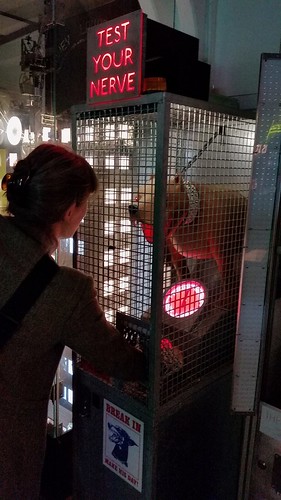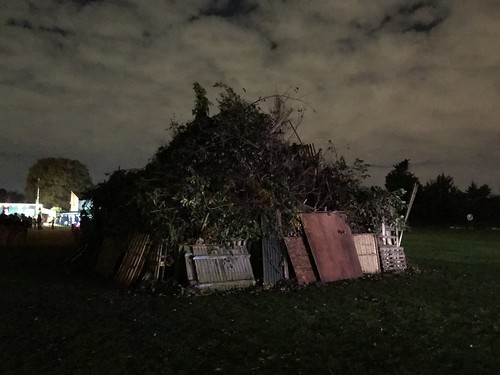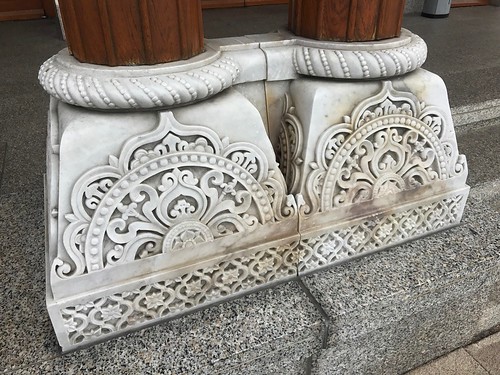Finally.
Finally, I went to a panto (short for “pantomime” which nobody ever ever says anymore). Like Bonfire Night, this has been on my list for ages. And like Bonfire Night, it took the arrival of the Intrepid Raul to spur me on. I mean who wants to go to a panto alone? That's just sad. Up to now, when I told friends in the UK that I’d never been to a panto they were mostly astonished. I guess for them it’s such a part of the fabric of growing up it’s impossible to believe someone could reach adulthood without having experienced the phenomenon. A bit like a Canadian never having seen “Hockey Night in Canada” or got their tongue stuck to a frozen tetherball pole.
For those non-UK readers for whom the term "pantomime" conjures images of Marcel Marceau, here’s how Wikipedia describes things, summing it up so well I’m not even going to try to paraphrase, which is what I usually do.
1. Thou shalt base thy panto on a traditional story:
There’s a very small canon of stories that make up the accepted pantomime repertoire, chief among which are: Dick Whittington and his Cat, Puss in Boots, Jack and the Beanstalk, Cinderella, Aladdin, Peter Pan, Sleeping Beauty, and Snow White. (Mother Goose, Wizard of Oz, Pinocchio and a few other stragglers crop up occasionally but it’s very much a closed shop.)
While the bare bones of the story were very familiar - cow sold for magic beans, giant, beanstalk, golden goose etc. - there were obviously a lot of liberties taken. It seems that most of the time panto scripts are written or re-written yearly to keep them current and hyper-local, which brings us to the second commandment:
2. Thou shalt pepper thy panto with local and topical references:
My “Jack and the Beanstalk” was naturally set in London, where Jack and her (Wait... her? More on that later) mother are forced to sell the family cow because their rent is spiralling out of control. It doesn’t take a PhD in sociology to see the topicality in that little detail. The script was also littered with references to Hammersmith, and gentrification, and to the general lack of vegetables in the modern diet, among other things.
And why is the rent so high? Because they live in Hammersmith! Also, their landlord is a textbook villain, the next Law of Panto.
3.Thou shalt have an over-the-top villain:
Panto baddies are really really bad, requiring the audience to hiss and boo loudly at them. The Lyric’s baddie this year was Squire Fleshcreep (truly excellent name) played with occasional corpsing* by a woman, Vikki Stone. The real estate mogul Fleshcreep bore a none-too-subtle resemblance to a certain US politician, especially with her moulded orange bouffant wig.
(*Corpsing is a theatre term to describe the phenomenon of an actor being seized by a fit of the giggles while performing. Often this occurs as a result of deliberate sabotage by one’s fellow actors, though in this case I think Ms. Stone basically cracked herself up, so ridiculous was the character. In fairness, a panto is probably the one place where you could corpse in every performance and it would only add to the show.)
4. Thou shalt employ gender-bending casting:
Traditionally there’s a lot of cross-gender casting in panto. The hero boy is usually played by a woman (in the style of “Peter Pan”) but the Lyric this year pushed things further. I’ve already mentioned the baddie was played by a woman, but in this production the hero Jack was not just played by a woman (Faith Omole) but was written as female. And Jill, Jack’s love interest, was male. And of course there was the Dame, the next piece of the puzzle.
5. Thou shalt have a Dame:
Every self-respecting panto needs a Dame - a role for an older woman who’s usually the mother of the hero. And almost always, the Dame is played by a man in drag. (Think Lady Bracknell on steroids in a much sillier costume.) It’s a long and proud tradition.
Besides taking a role in the narrative the Dame for “Jack and Beanstalk” also did a bit of stand up comedy, sang and danced several musical numbers, tossed candies into the audience, and read out birthday wishes and random greetings to people in the audience (a bit like having your name on the scoreboard at a hockey game). In case you haven’t twigged to it yet, the fourth wall is utterly non-existent in panto.
6. Thou shalt subject thy patrons to Audience Participation:
The introvert’s nightmare. Audience participation in a panto takes several distinct forms:
7. Thou shalt have lots of music:
I’ve already mentioned the sing-a-long, but we got a lot more music in “Jack and the Beanstalk”. And in true panto fashion, a lot of it was filched from current popular music charts with adapted lyrics, many of which featured another panto staple.
8. Thou shall not shy from the use of awful puns and innuendo:
A panto is family entertainment, but that doesn’t mean there can’t be a little something for the grown-ups. This usually takes the form of not-so-subtle double entendre. The Dame is frequently implicated in this, often along with whatever hapless victim has been plucked out of the audience. And puns. Oh lord, the puns. It’s probably best not to mention them, which in “Jack” were largely vegetable-themed. Lettuce just skip it. (*rimshot*)
And of course along with the puns comes the physical equivalent - slapstick.
9. Thou shalt make a mess:
This tradition has its roots in Commedia dell'arte. (Actually, pantomime in general grew out of Commedia, so there’s your dose of real culture for this blog post.) These days pantos are liberally sprinkled with physical gags, but one form in particular is a panto staple and is often simply known as The Messy Scene. Often involving baking, it’s an excuse to make a big mess and (hopefully) pour goo all over your fellow actors. (I didn’t specifically notice this on the night I saw my panto, but I’m guessing the Messy Scene is often followed closely by what we in the industry like to call The Interval.)
10. Thou shalt cast minor celebrities:
You know how half-remembered celebrities in America used to wash up on the Love Boat or Fantasy Island? In England they do panto. Sometimes a theatre will snag a genuinely leading light (Sir Ian McKellan played the Dame the Widow Twankey in the Old Vic’s a production of “Aladdin" in 2004) but too often you get someone from "EastEnders". It’s like the theatrical equivalent of “I’m a Celebrity, Get Me Out of Here!”
And there you have it - the Ten Commandments of Panto. A truly great fun, silly, frantic, loud, crazy traditional holiday treat. I had a fantastic time at “Jack and the Beanstalk” and will definitely be going back next year for whatever is on the cards. Making certain, of course, to get tickets safely tucked in the back of the stalls, or possibly the 7th balcony, well out of the audience participation zone.
Finally, I went to a panto (short for “pantomime” which nobody ever ever says anymore). Like Bonfire Night, this has been on my list for ages. And like Bonfire Night, it took the arrival of the Intrepid Raul to spur me on. I mean who wants to go to a panto alone? That's just sad. Up to now, when I told friends in the UK that I’d never been to a panto they were mostly astonished. I guess for them it’s such a part of the fabric of growing up it’s impossible to believe someone could reach adulthood without having experienced the phenomenon. A bit like a Canadian never having seen “Hockey Night in Canada” or got their tongue stuck to a frozen tetherball pole.
For those non-UK readers for whom the term "pantomime" conjures images of Marcel Marceau, here’s how Wikipedia describes things, summing it up so well I’m not even going to try to paraphrase, which is what I usually do.
"Pantomime (informally panto) is a type of musical comedy stage production designed for family entertainment. It was developed in England and is still performed throughout the United Kingdom, generally during the Christmas and New Year season... Modern pantomime includes songs, gags, slapstick comedy and dancing, employs gender-crossing actors and combines topical humour with a story loosely based on a well-known fairy tale, fable or folk tale. It is a participatory form of theatre, in which the audience is expected to sing along with certain parts of the music and shout out phrases to the performers." - WikipediaPantomime isn’t just a fun tradition, it can also be a lifeline for theatres. Many commercial and subsidised theatres rely heavily on strong ticket sales for the panto to keep them going throughout the year. A good panto can help keep the doors open. And what comprises a good panto? I’m glad you asked. Here, as far as I can tell, are the Ten Commandments of panto, as defined by someone who has seen exactly one but has years of experience in making things up and advanced Googling skills:
1. Thou shalt base thy panto on a traditional story:
There’s a very small canon of stories that make up the accepted pantomime repertoire, chief among which are: Dick Whittington and his Cat, Puss in Boots, Jack and the Beanstalk, Cinderella, Aladdin, Peter Pan, Sleeping Beauty, and Snow White. (Mother Goose, Wizard of Oz, Pinocchio and a few other stragglers crop up occasionally but it’s very much a closed shop.)
I saw “Jack and the Beanstalk” at the Lyric Hammersmith (running until January 6th so it’s not too late, Londoners!).
2. Thou shalt pepper thy panto with local and topical references:
My “Jack and the Beanstalk” was naturally set in London, where Jack and her (Wait... her? More on that later) mother are forced to sell the family cow because their rent is spiralling out of control. It doesn’t take a PhD in sociology to see the topicality in that little detail. The script was also littered with references to Hammersmith, and gentrification, and to the general lack of vegetables in the modern diet, among other things.
And why is the rent so high? Because they live in Hammersmith! Also, their landlord is a textbook villain, the next Law of Panto.
3.Thou shalt have an over-the-top villain:
Panto baddies are really really bad, requiring the audience to hiss and boo loudly at them. The Lyric’s baddie this year was Squire Fleshcreep (truly excellent name) played with occasional corpsing* by a woman, Vikki Stone. The real estate mogul Fleshcreep bore a none-too-subtle resemblance to a certain US politician, especially with her moulded orange bouffant wig.
(*Corpsing is a theatre term to describe the phenomenon of an actor being seized by a fit of the giggles while performing. Often this occurs as a result of deliberate sabotage by one’s fellow actors, though in this case I think Ms. Stone basically cracked herself up, so ridiculous was the character. In fairness, a panto is probably the one place where you could corpse in every performance and it would only add to the show.)
Vikki Stone as Squire Fleshcreep. Love the hair. Love the moustache. Just love. The fact that the bad guy was played by a woman brings us to the next commandment:
Traditionally there’s a lot of cross-gender casting in panto. The hero boy is usually played by a woman (in the style of “Peter Pan”) but the Lyric this year pushed things further. I’ve already mentioned the baddie was played by a woman, but in this production the hero Jack was not just played by a woman (Faith Omole) but was written as female. And Jill, Jack’s love interest, was male. And of course there was the Dame, the next piece of the puzzle.
5. Thou shalt have a Dame:
Every self-respecting panto needs a Dame - a role for an older woman who’s usually the mother of the hero. And almost always, the Dame is played by a man in drag. (Think Lady Bracknell on steroids in a much sillier costume.) It’s a long and proud tradition.
Besides taking a role in the narrative the Dame for “Jack and Beanstalk” also did a bit of stand up comedy, sang and danced several musical numbers, tossed candies into the audience, and read out birthday wishes and random greetings to people in the audience (a bit like having your name on the scoreboard at a hockey game). In case you haven’t twigged to it yet, the fourth wall is utterly non-existent in panto.
Kraig Thornber as Dame Lotte, who had more costume changes than Madonna. The Dame is also often takes the lead in another critical element.
The introvert’s nightmare. Audience participation in a panto takes several distinct forms:
- 6.1: Shouting out, including two important stock phrases:
- 6.1a: A character will be accused of something and cry out “Oh no I didn’t!” (Or, alternately in the third person: “Oh no he/she didn’t”) and the audience responds with “Oh yes you did!” And the character says “Oh no I didn’t!” And the audience comes back with… well, you get the idea.
- 6.1b: The second shout-out is wrapped up another essential element, the Ghost Chase (6.1b.i), wherein characters are stalked by a ghost/villain/random miscreant who lurks out of sight while the the audience shout themselves hoarse screaming, “He’s behind you!” only for the lurker to disappear just before the character turns around. Naturally, this sequence gets repeated many times. “He’s behind you!” is part of the cultural fabric of the country, like “Only Fools and Horses” or complaining about the trains.
- (Note that both 6.1a AND 6.1b must be present. In fact, I’d say if you didn’t get both you’d be well within your rights to demand a refund for your ticket and possibly write a sternly worded letter to The Times rebuking the theatre management, starting with the phrase, “Am I alone in thinking…?”.)
- 6b: Singing: Besides songs performed by the cast, there is traditionally a front-cloth sing-along wherein the audience is divided into two halves and exhorted to out-sing the opposing side. This year at the Lyric we did “Ain’t no mountain high enough".
- 6c: Being dragged up on stage: The ultimate in audience participation is being plucked out of your seat to become part of the action. Again, the Dame is often involved in this, singling out a make audience member for special attention and referring back to him throughout the evening, culminating in having him hauled up on stage, dressed in a silly costume, and made to perform some sort of action. (There’s a good Guardian piece here from the point of view of the hapless victim.) At the Lyric, in addition the to adult victim, they also brought a little girl up on stage who got to chop down the beanstalk!
The Guardian columnist Tim Dowling in his appearance in Cinderella at the Hackney Empire. He brought it on himself, poor sod. At least he didn’t have to do a musical number, though there were plenty because you can’t have a panto without music, therefore:
I’ve already mentioned the sing-a-long, but we got a lot more music in “Jack and the Beanstalk”. And in true panto fashion, a lot of it was filched from current popular music charts with adapted lyrics, many of which featured another panto staple.
8. Thou shall not shy from the use of awful puns and innuendo:
A panto is family entertainment, but that doesn’t mean there can’t be a little something for the grown-ups. This usually takes the form of not-so-subtle double entendre. The Dame is frequently implicated in this, often along with whatever hapless victim has been plucked out of the audience. And puns. Oh lord, the puns. It’s probably best not to mention them, which in “Jack” were largely vegetable-themed. Lettuce just skip it. (*rimshot*)
And of course along with the puns comes the physical equivalent - slapstick.
9. Thou shalt make a mess:
This tradition has its roots in Commedia dell'arte. (Actually, pantomime in general grew out of Commedia, so there’s your dose of real culture for this blog post.) These days pantos are liberally sprinkled with physical gags, but one form in particular is a panto staple and is often simply known as The Messy Scene. Often involving baking, it’s an excuse to make a big mess and (hopefully) pour goo all over your fellow actors. (I didn’t specifically notice this on the night I saw my panto, but I’m guessing the Messy Scene is often followed closely by what we in the industry like to call The Interval.)
The Milking Scene from “Jack and the Beanstalk” - a very credible variation in the form. Clearly they’ve done this before, because they spread a tarp on the stage and put on protective clothing in preparation.
You know how half-remembered celebrities in America used to wash up on the Love Boat or Fantasy Island? In England they do panto. Sometimes a theatre will snag a genuinely leading light (Sir Ian McKellan played the Dame the Widow Twankey in the Old Vic’s a production of “Aladdin" in 2004) but too often you get someone from "EastEnders". It’s like the theatrical equivalent of “I’m a Celebrity, Get Me Out of Here!”
And there you have it - the Ten Commandments of Panto. A truly great fun, silly, frantic, loud, crazy traditional holiday treat. I had a fantastic time at “Jack and the Beanstalk” and will definitely be going back next year for whatever is on the cards. Making certain, of course, to get tickets safely tucked in the back of the stalls, or possibly the 7th balcony, well out of the audience participation zone.






